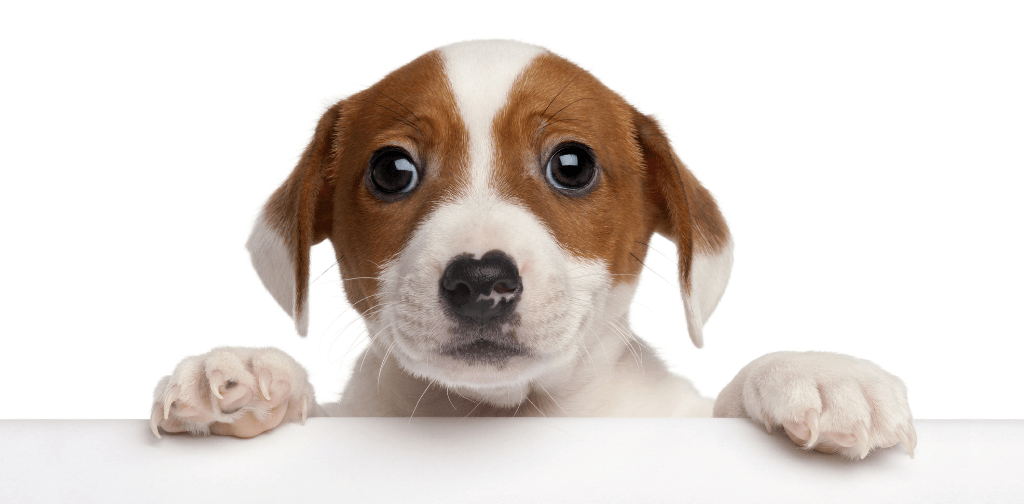
“Training a puppy is like raising a child. Every single interaction is a training opportunity.” ~Ian Dunbar
There’s nothing quite like puppy love. Puppies are adorable and lovable but, let’s face it, dealing with them 24/7 can be exhausting and frustrating too. Training your puppy requires consistency, patience and positive reinforcement. The right kind of training will instill good habits in your dog while building a loving bond between you and your pet.
The goal of puppy training is to get him/her to understand your expectations. Once your expectations are clearly understood, your puppy will feel secure and confident that he can meet them. The foundation of puppy training is to provide correction and reward, not harsh or angry correction. You should NEVER use physical punishment such as spanking, kicking or any type of action that hurts your dog. All you need is your voice. A firm “no” is enough correction for most puppies.
Here are 18 puppy training tips to help you keep your sanity and guide you through those first few weeks and months of puppy parenthood.
- Think of your puppy as a toddler that has no sense of right or wrong. They need to be taught what you expect. Like a toddler, consistency and repetition are key.
- Remain calm and assertive when interacting with your puppy.
- A crate is an invaluable tool for training your puppy. Your puppy will feel safe and secure when you need to use it. The American Human Society states that you should not keep puppies in a crate for more than 3-4 hours because they can’t hold their bladder and bowels longer than that.
- Use baby gates to block off parts of the house that are off limits to your puppy.
- Teach your puppy the command “watch me.” This is a good ability for your puppy to master and becomes the foundation for all other commands. “Watch me” is a good command to use if your dog is distracted by another dog, child, squirrel, cars, etc.
- Teach your dog to “go to your spot.” Their “spot” could be a rug, mat, crate, bed, etc. This is very useful during mealtimes when you want your dog to learn to not beg.
- Don’t get upset when your puppy has an accident or makes a mistake. They truly don’t know any better even though it seems like they are doing it just to get you frustrated.
- Like you would with a toddler, use distraction to get them interested in something you want them to do, as opposed to telling them “no” constantly.
- Don’t give in to something that seems cute when they are little but will be a no-no when they are bigger, such as jumping up on people and begging for food.
- Do take them to puppy training school early so they learn manners early on. This can be one of the most valuable things you can do to teach your puppy obedience.
- Start training your puppy as soon as possible. Have reasonable expectations based on your puppy’s age, but the earlier you get started, the better.
- Use bitter apple spray to teach your dog what not to chew on.
- Buy a variety of toys for your puppy to chew on. When he starts to chew on something you don’t want him to chew on – like your shoe – substitute one of his toys.
- If you don’t want your puppy to bark at the neighbors, go out with him and reassure him when he starts barking. Eventually, he’ll learn that he doesn’t need to bark at them and will limit his barking to unknown people and animals.
- When you puppy is small, carry her out to the grass and place them where you want them to go. This helps eliminates accidents on the way and very tangibly teaches them where to go.
- Give lots of positive reinforcement when your puppy goes where you want her to go. Don’t scold when they make a mistake. Praise and treat them every time they go outside. Associate potty time with a term such as “go potty” or “hurry up” so your dog learns when you want them to go.
- When teaching commands, work in short, 5-minute intervals.
- The most important tip is to have LOTS and LOTS of patience. Enjoy the process and the bond that is developing between you and your puppy that will last a lifetime.
We hope these 18 simple tips will help give you a head start when training your puppy. Once your puppy is old enough (has completed a full round of adult immunizations), consider enrolling him/her in daycare so that your puppy gets to play and interact with other dogs and human beings during the day. Dog daycare is a fun and healthy option to crating a dog or hiring a dog walker to walk your dog every day.
There are many benefits to choosing day care for your puppy / dog. Learn more about why Canine Campus in Colorado Springs is one of the best decisions you can make for your canine companion. Call us today at 719-448-9600 to get your puppy started off on the right foot (or should we say “paw”) at Canine Campus.













It’s good to learn that you should keep your puppy in a crate for no longer than 3 to 4 hours. My wife and I are wanting to get a dog for our family and we were looking for tips on how to train a puppy. I’ll be sure to get a crate for the puppy before he comes home.
Hi Rick, Thanks for sharing your comment. Good luck with the search for your new family member! Joelle